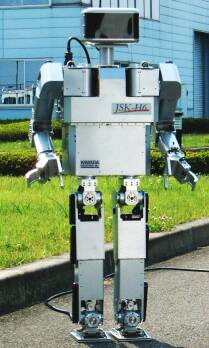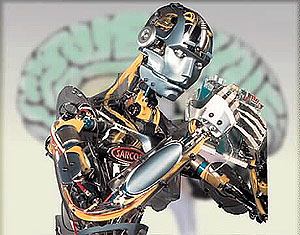Biped Robot Database
Biped Robot Research in the World
Here is the list of research sites which have intensive biped research project.
[...]

Robots Resources for the Masses.

Biped Robot Database
Humanoid Robot H6

Honda P3 One of the great challenges of the future is the development of concepts for mobility beyond the street, in the immediate, natural environment of human beings.
Will robots ever learn to love?
